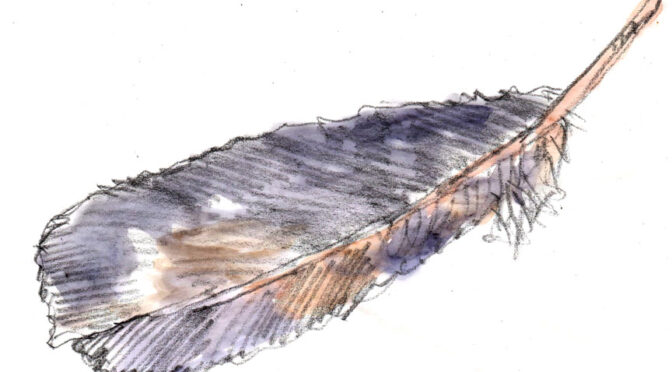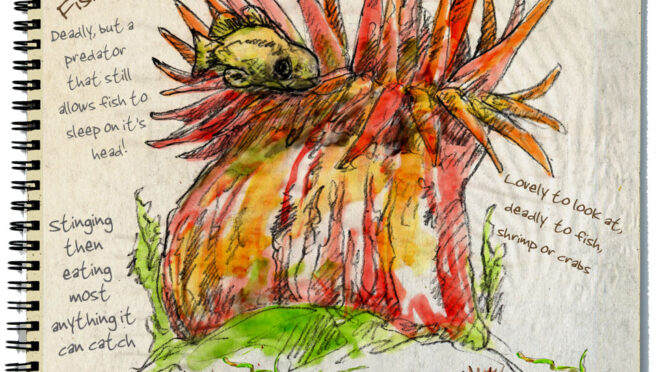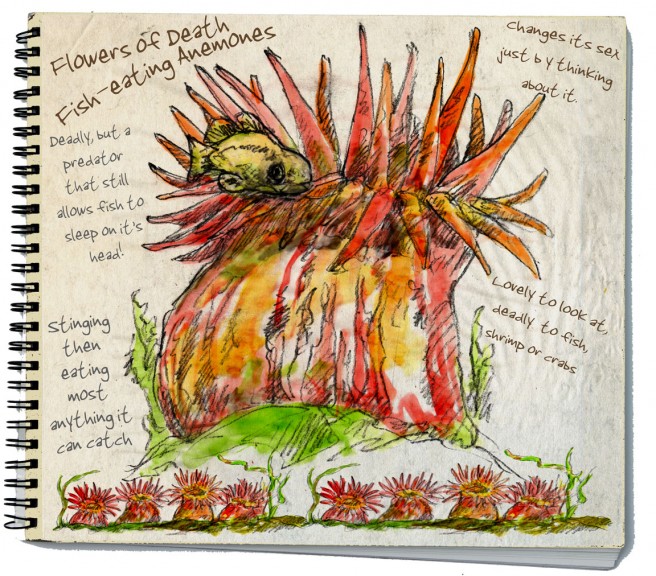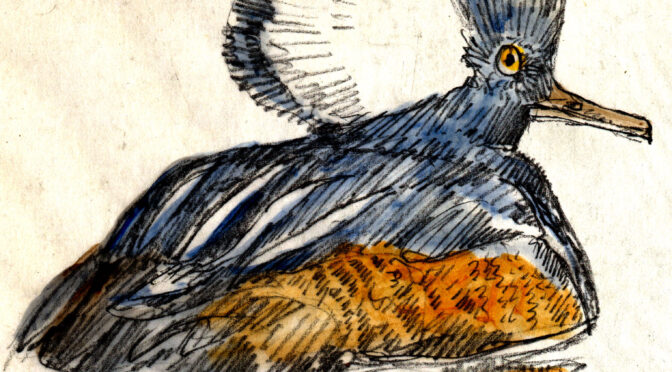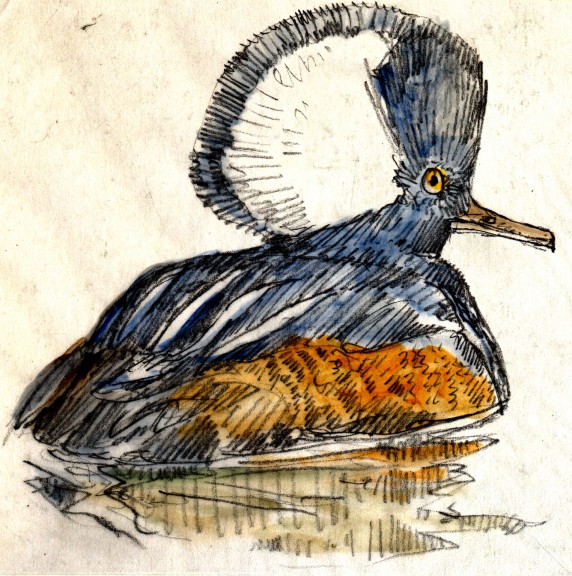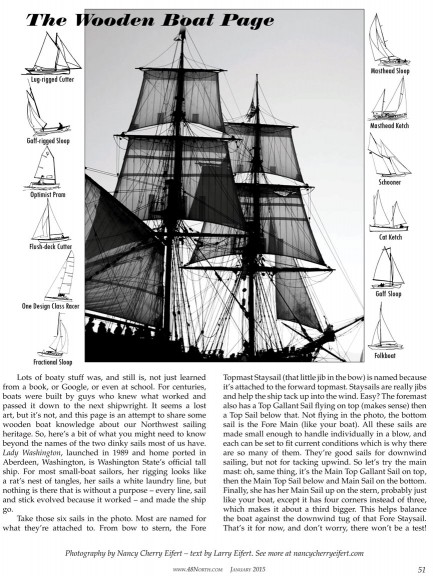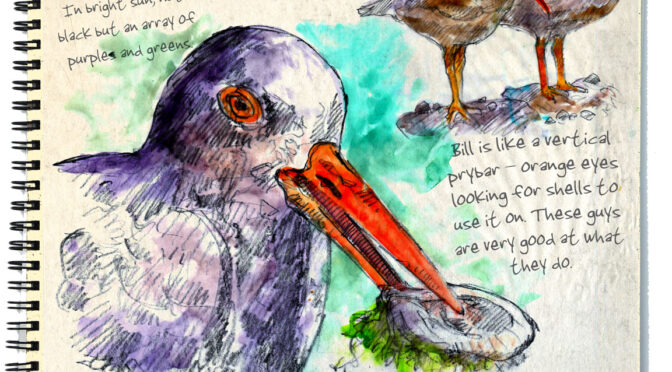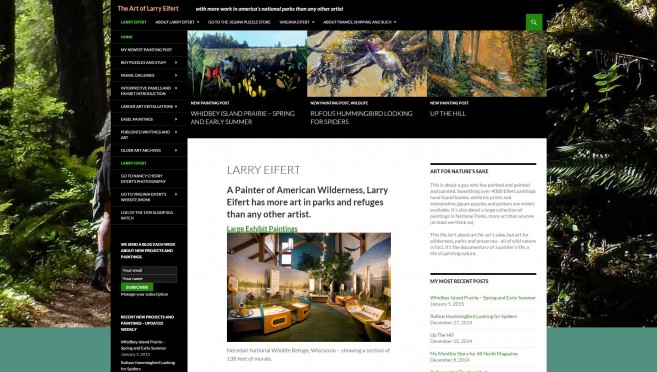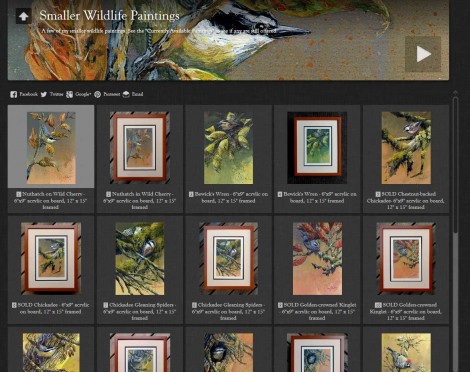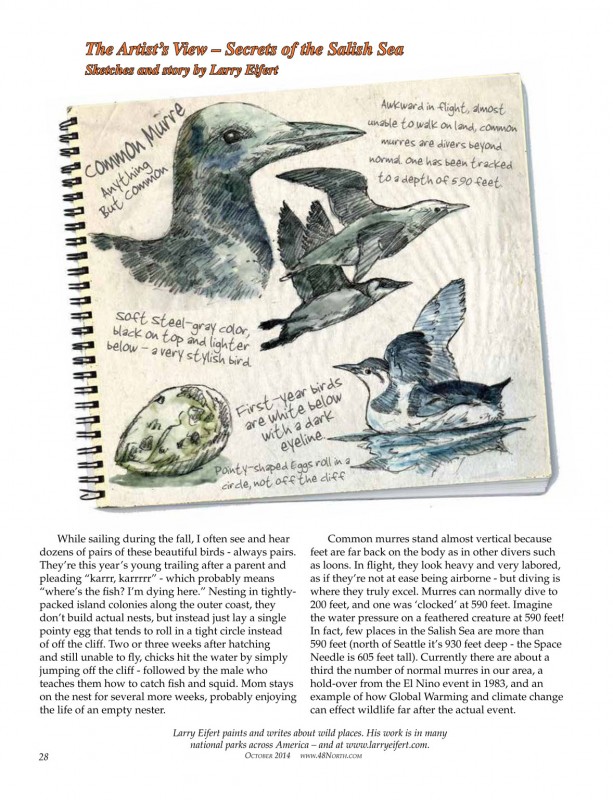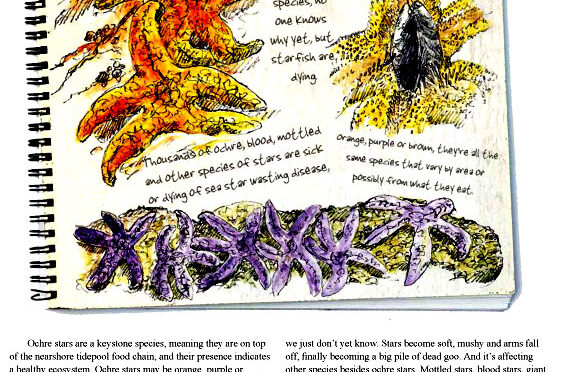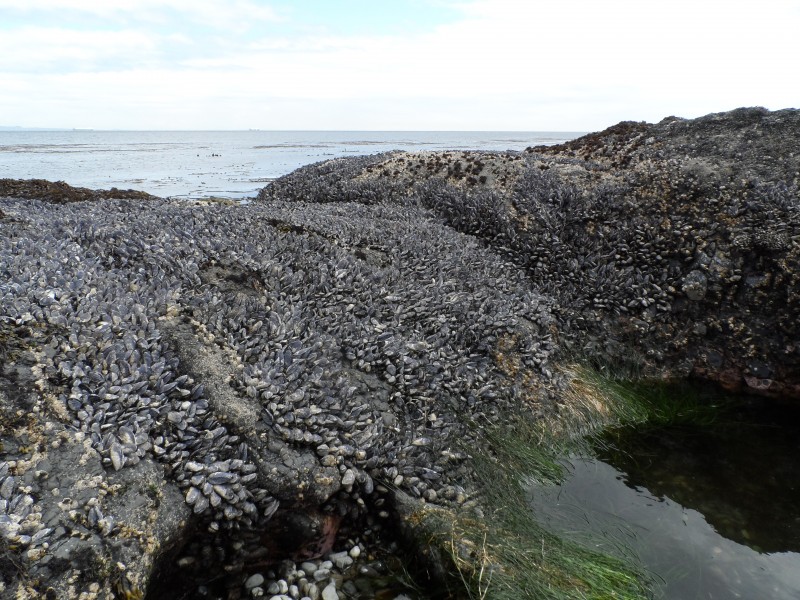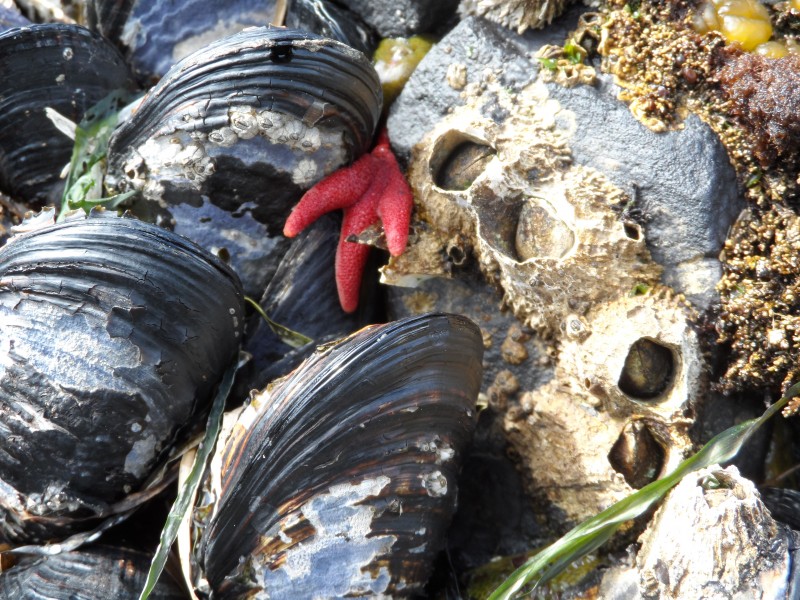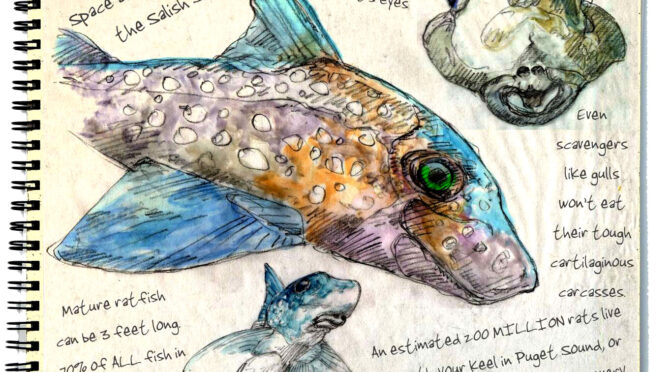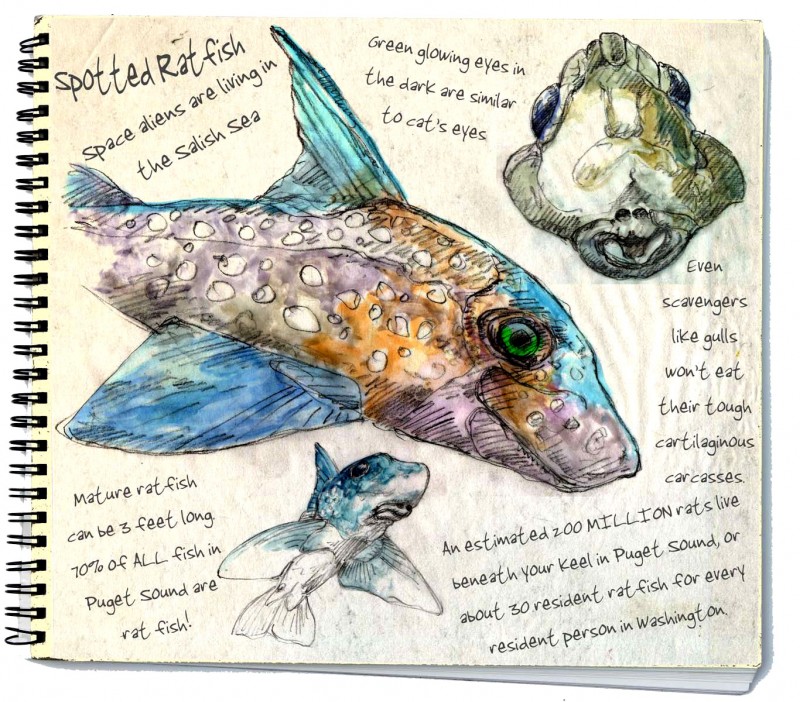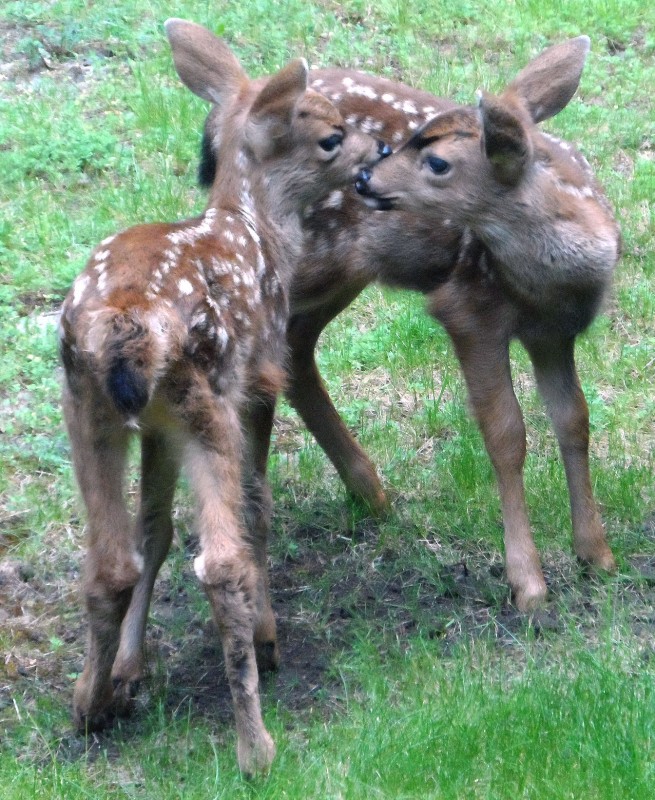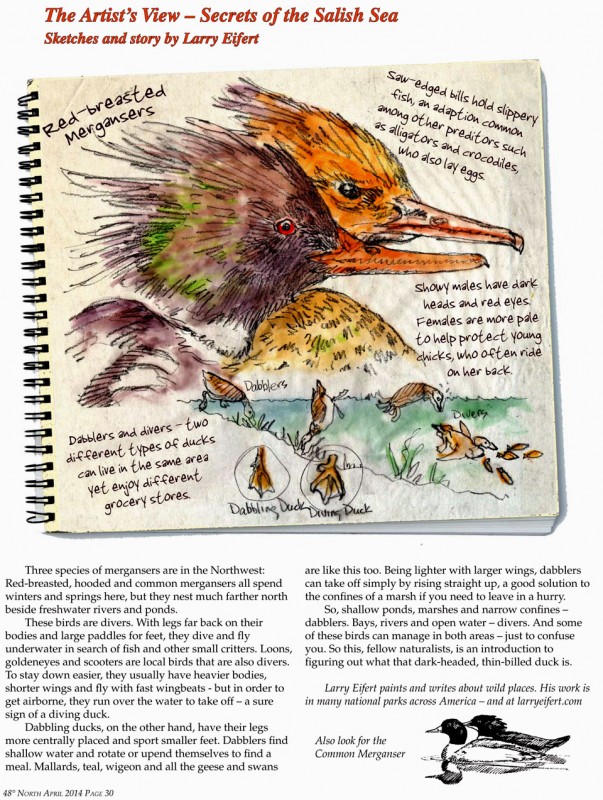
This was published last month in 48 North magazine for my monthly contribution. We have a pair of these guys nesting in our woods, so it seems appropriate.
Here’s the story: And just why is this guy doing a crow page in a sailing magazine? Because they’re not just crows, a common bird that everyone knows, but a Northwestern crow. Yes, we have our own crow species! Looks exactly the same but smaller, ‘KAWWW’ sounds the same but deeper and hoarser voiced. If you’re on or around salt water in the Salish Sea and north all the way to Alaska, likely the all-black beach bird you’re looking at is a Northwestern crow. Problem is, you can’t be sure because in urban areas they now mingle, mix and interbred – but once you get to the Olympic Peninsula, you can be fairly confident you’re seeing one of these guys.

By far, the best trait you can look for are their clamming skills. Browsing the shoreline wrack for anything edible, they’ll often pick up a live cockle or clam, fly straight up to about 30 feet, change course to level off – and drop the shell to the rocks below. Most of the time the shell breaks on the first try and down they go for lunch. Evidently they level off to see where the shell lands so they can grab it before a gull does. Normal American crows don’t seem to do this, just Northwestern crows. On some beaches, I’d have to say that of birds on the beaches, there may be more Northwestern crows than gulls.
Thanks for reading this week.
Larry Eifert
Here’s the blog on the web. And here’s my Facebook fan page. I post lots of other stuff there.
Click here to go to our main website – with jigsaw puzzles, prints, interpretive portfolios and lots of other stuff.
Nancy’s web portfolio of beautiful photographs
And Click here to go to Virginia Eifert’s website. Her books are now becoming available as Amazon Kindle books.
